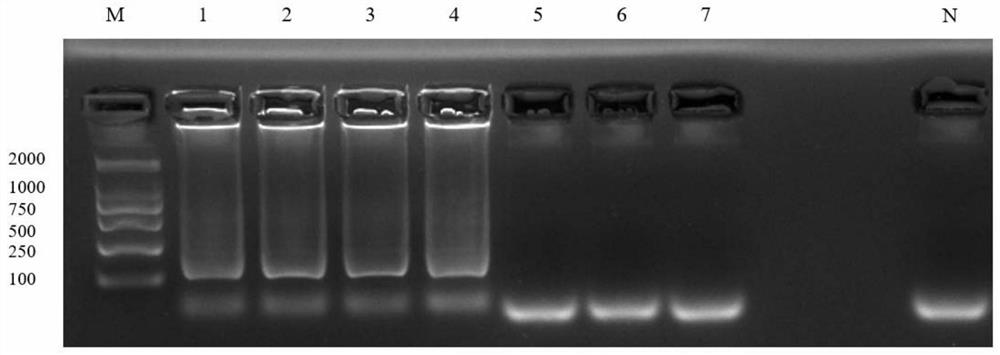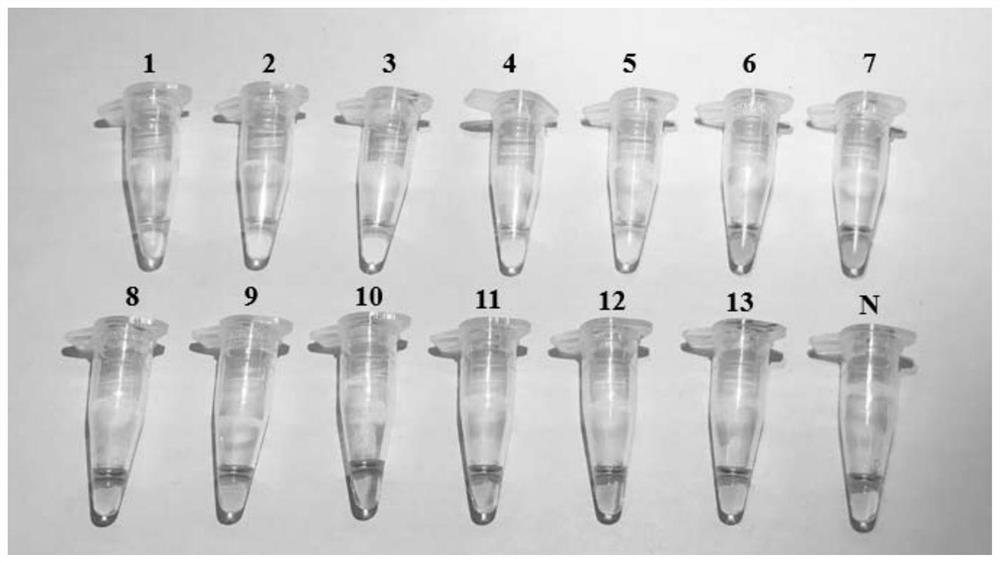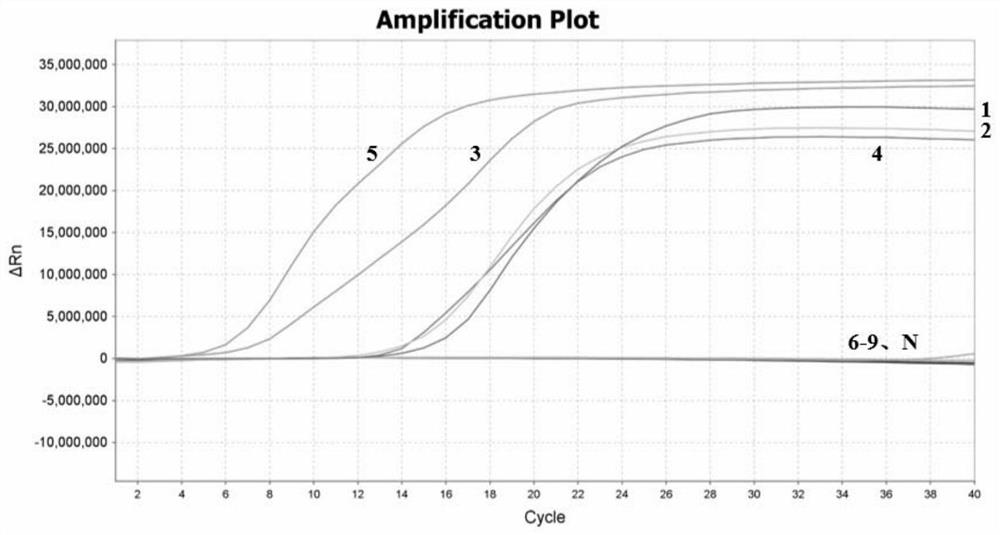LAMP (loop-mediated isothermal amplification) primer group for identifying bark beetles and application thereof
A technology of C. japonica and a primer set, applied in the biological field, can solve the problems of unsuitable grass-roots departments for popularization and application, expensive instruments and equipment, and high identification cost, and achieves the effects of low cost, high sensitivity and strong specificity
- Summary
- Abstract
- Description
- Claims
- Application Information
AI Technical Summary
Problems solved by technology
Method used
Image
Examples
Embodiment 1
[0083] Example 1. Acquisition of primer sets and kits for identification of C. beetle
[0084] 1. Design of primer set for identification of C. zebra
[0085] 1. Taking the full-length sequence of COI gene in the mitochondrial genome of C. gracilis as the target gene, the primer set TG-LAMP for identification of P. gracilis was designed and synthesized. The primer sequences of the primer sets are shown in Table 2.
[0086] Table 2
[0087]
[0088] 2. Validation of primer sets used for identification of C. beetle
[0089] 1. Use a micro-sample genomic DNA extraction kit to extract the genomic DNA of the beetle sample to obtain the genomic DNA of the beetle sample. For the test beetle samples, in Table 1, the numbered 1, the numbered 2, the numbered 3, the numbered 3, the numbered 4, the numbered 10 flower Spotted Beetle, Hooked Beetle No. 12, and Hundred-Skin Beetle No. 13.
[0090] 2. Using the genomic DNA of the beetle sample as a template, using the primer set TG-LA...
Embodiment 2
[0099] Example 2. Application of the kit prepared in Example 1 in identifying whether the beetle to be tested is or is a candidate for the beetle
[0100] 1. Identify whether the beetle to be tested is or is a candidate for the beetle by the results of agarose gel electrophoresis
[0101] 1. Use a micro-sample genomic DNA extraction kit to extract the genomic DNA of the beetle to be tested to obtain the genomic DNA of the beetle to be tested.
[0102] 2. Using the genomic DNA of the beetle to be tested as a template, using the primer set TG-LAMP to perform loop-mediated isothermal amplification to obtain the amplification product.
[0103] The reaction system was 25 μL, consisting of 12.5 μL WarmStart LAMP 2X Master Mix, 1 μL template, primer mix, and sterile ultrapure water. The primer mixture is the mixture composed of each primer in the primer set TG-LAMP. In the reaction system, the final concentration of outer primer F3 and outer primer B3 were both 0.2 μM, and the fina...
Embodiment 3
[0135] Example 3. Specificity experiment
[0136] The beetle 1 to be tested is the beetle numbered 1.
[0137] The beetle 2 to be tested is the beetle numbered 2.
[0138] The beetle 3 to be tested is the beetle numbered 3.
[0139] The beetle 4 to be tested is the beetle number 4.
[0140] The beetle 5 to be tested is the beetle number 5.
[0141] The test beetle 6 is the variegated beetle numbered 6.
[0142] The test beetle 7 is the variegated beetle numbered 7.
[0143] Beetle 8 to be tested is the beetle number 8.
[0144] The test beetle 9 is the variegated beetle numbered 9.
[0145] Beetle 10 to be tested is the beetle number 10.
[0146] Beetle 11 to be tested is the beetle No. 11.
[0147] Beetle 12 to be tested is the beetle number 12.
[0148] Beetle 13 to be tested is a hundred strange beetles numbered 13.
[0149]The test beetle 14 is the pseudo-white-bellied beetle numbered 14.
[0150] Perform the following steps for each beetle to be tested:
[015...
PUM
| Property | Measurement | Unit |
|---|---|---|
| Sensitivity | aaaaa | aaaaa |
| Sensitivity | aaaaa | aaaaa |
| Sensitivity | aaaaa | aaaaa |
Abstract
Description
Claims
Application Information
 Login to View More
Login to View More - R&D
- Intellectual Property
- Life Sciences
- Materials
- Tech Scout
- Unparalleled Data Quality
- Higher Quality Content
- 60% Fewer Hallucinations
Browse by: Latest US Patents, China's latest patents, Technical Efficacy Thesaurus, Application Domain, Technology Topic, Popular Technical Reports.
© 2025 PatSnap. All rights reserved.Legal|Privacy policy|Modern Slavery Act Transparency Statement|Sitemap|About US| Contact US: help@patsnap.com



